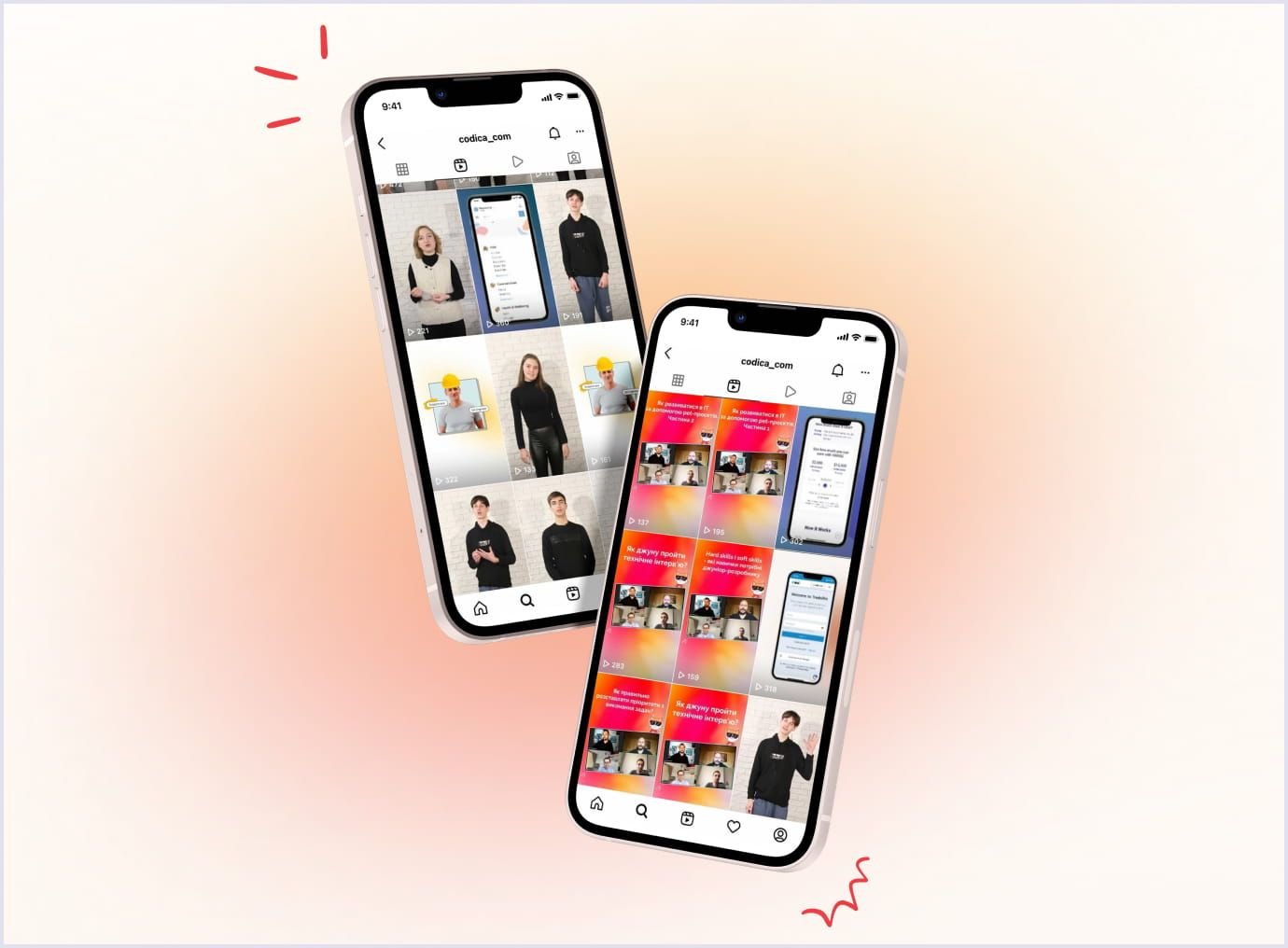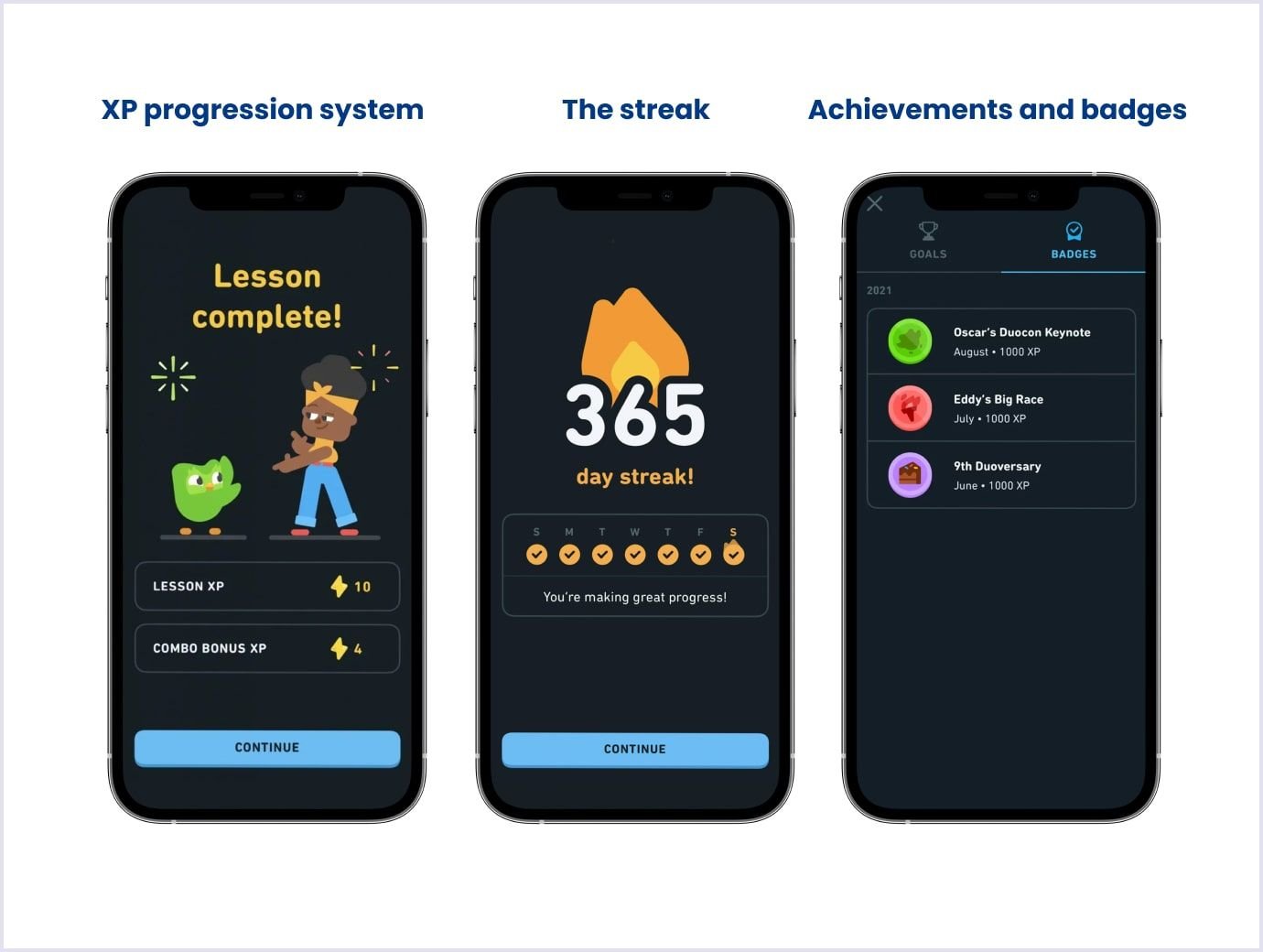Thanks to advanced technologies, today, we have millions of apps that help us with our daily lives. Shopping, communication, productivity, work, healthcare, banking, and many more services are accessible via our mobile devices.
Mobile apps bring speed and convenience that form how we interact, organize our daily lives, reach out to our customers by delivering goods and services, and have fun.
Regarding how helpful mobile apps are today, we collected the top 15 mobile app development trends of 2025. Understanding these trends will help you meet your audience’s needs and stay in the rewarding yet competitive game of the mobile app industry.
1. Personalization
Personalizing experiences and choices significantly improve user satisfaction. Offering a product or service relevant to a specific audience's needs also brings better conversions. So, personalization is one of the aspects of mobile apps to attract and engage customers.
By applying personalization features in your mobile app, you can highlight your products and services and provide your customers with better options and convenience.
At Codica, we offer custom mobile app development services. So, when you turn to us for your mobile app project, we start with project discovery sessions to tailor your solution to your business needs.
The discovery phase helps us validate your idea, outline and document product requirements, and check business hypotheses. Thanks to this stage, we can optimize the mobile app development process and meet your budget estimates.
Below is a short video about the deliverables you get at the end of these sessions.
When implementing personalization features, collecting analytics data about web users is essential.
For example, Netflix uses your browsing history and then suggests recommendations. According to Netflix's CEO Reed Hastings, 75% of all views are reactions to such recommendations.
Read also: How to Create a Successful Custom Web Product Step by Step: Codica's Experience
2. Focus on seamless UX and appealing UI
A neat and simple design is always relevant for mobile screens, considering their small size. Frictionless design for smartphone users includes minimalism, a clear interface, and a dark mode. Such design makes content more straightforward to read and perceive.
Therefore, shopping, entertainment, and advanced activities, like banking, are accessible to more people via mobile apps.
To make your app’s UI/UX in 2025 appealing and engaging, focus on a clean layout, easy navigation, and simple interactions. Also, ensure that your users can easily access frequently used features and modify parameters as needed.
You may also like: Amazing UI/UX Design Tools to Make Your Life Easier
3. Accessibility features
As mobile apps have become commonly used in our daily lives, people with different abilities should have access to them, too. Today, the law protects people with impairments by making places of public accommodation accessible. Websites and mobile apps also fall under this umbrella term.
According to the World Health Organization, 16% of the world's population are people with disabilities.
You can rely on the following standards when building your mobile solution:
- ADA - Americans with Disabilities Act;
- WCAG - Web Content Accessibility Guidelines;
- CVAA - Twenty-First Century Communications and Video Accessibility Act;
- EAA - European Accessibility Act;
- ACA - Accessible Canada Act.
Following these guidelines makes your app more user-friendly, helps you expand your audience, and protects you against costly lawsuits.
For example, Uber has added compatibility with screen readers, and Spotify offers audio navigation for visually impaired users.
Specialized apps, like Be My Eyes and Aira, provide support thanks to trained volunteers who guide users via instructions describing routes, places, objects, and more. Big companies like Microsoft, Starbucks, Bank of America, and Target use Aira to provide access to customers and employees.
Also, watch the video below to see how Google Maps provides users with accessibility information in specific spots.
Here are some tips on how you can design your app to make it enjoyable for everyone:
- Enable compatibility with screen readers, such as VoiceOver for iOS and TalkBack for Android;
- Keep gestures to navigate your app simple, like tapping or swiping;
- Provide easy methods for data entry using autofill and checkboxes;
- Pay attention to the high contrast of colors and text;
- Make it easy to adjust font size;
- Include voice control for navigation and interactions.
For more information on designing an accessible mobile app, see documentation from Google and Apple.
4. Camera-focused apps
As smartphone camera technology evolves over time, we also enjoy apps that use cameras for content creation and sharing. The video-based social apps like YouTube and Facebook Watch maintain their popularity.
Socials also actively use this mobile app development trend for video. For example, Instagram offers a video calling function. The reel function is widespread and helps users share their experiences.
By the way, check out Codica’s reels below, which are an example of our content on Instagram.

People can't get enough mobile apps to help them broadcast videos, entertain, and connect with friends.
According to Statista, the videoconferencing market is expected to reach 19.1 billion U.S. dollars by 2027. So, apply this mobile development trend and catch the wave now!

5. Gamification
Building your app is the first significant step in entering the mobile app market. Yet, you need to keep your customers engaged. Gamification is a great help in this matter. By including rewards for achievements, you help your customers grow and return to your app.
Let’s look at an example of gamification by Duolingo, which has over 500 million users.
This language learning resource provides exercises in a gamified environment. The following gamification features make users engaged with the app:
- Choosing difficulty level. When starting a new game, the user can set a level based on experience and the difficulty they want to overcome;
- Boss battles. Duolingo introduces tests before moving to the next level in language learning. Thus, users get a sense of accomplishment as they make progress;
- Achievement badges. Each module a user completes on Duolingo is saved as a badge. These badges show what users have learned.

Source: Duolingo
If you want to learn more about implementing gamification in your mobile app, check out our article for a deep-dive overview.
6. Artificial intelligence and machine learning
Advanced technologies shape today’s reality, and mobile apps are also part of this game. AI and ML make apps more engaging, convenient, and secure by providing real-time updates and personalized experiences. For example, these technologies are used for personalization, customer support, enhanced access, user behavior insights, fraud prevention, and more.
So, we can name AI and ML as two of the hottest new trends in mobile app development in 2025.
Instances of using these technologies include WhatsApp and banking apps that use AI-powered chatbots to provide customer support. Fitbit uses ML to predict fitness trends and provide actionable suggestions.
7. Augmented reality
As extended reality advancements evolve, mobile apps also use augmented reality (AR) to bridge the physical and online worlds. As Statista research states, the global extended reality market will gain over $100 billion U.S. dollars by 2026.
The mobile app development industry uses extended reality mostly in AR form in sales, entertainment, and education. For example, Versace partnered with Snapchat to present their Mercury sneaker collection. Thanks to Snapchat’s AR technology, people could virtually interact and try on these luxury sneakers. You could also tap to “break” a virtual stone and unveil the shoe in a dynamic 3D format.
At Codica, we have an experience in creating AR solutions for businesses. The project in the video below is a cloud-based real estate portal. This cloud web solution provides virtual 3D tours. It lets users see an accommodation on the screen as if they are already there.
We made this cloud platform easy to use, fast-loading, and responsive. It loads smoothly on desktop devices and smartphones and provides the best user experience.
Below is a video showing how this cloud technology solution works on mobile screens.
8. 5G technology
5G allows for establishing a modern network type. This technology enhances mobile app development by offering faster data transfer, lower latency, and more reliable connectivity. It delivers data faster and supports more users, devices, and services than earlier network standards.
What does the popularity of 5G mean for mobile app development? 5G modifies the way we create and use applications thanks to improved performance and speed. To give you a better understanding, here are some notable instances of using 5G in mobile apps:
- NVIDIA GeForce NOW uses 5G to provide smooth, lag-free gaming experiences;
- Netflix, YouTube, and Disney+ use 5G for streaming 4K and 8K videos with minimal buffering;
- Uber, Google Maps, Moovit, and Citymapper use 5G to improve ride tracking, route optimization, and real-time updates on bus and train schedules;
- AI processing is quicker with 5G, which allows apps to deliver real-time recommendations on Spotify or Amazon;
- Enhanced connectivity allows emergency apps to share data and updates instantly.
9. Super apps
A super app is one large application into which smaller applications are integrated. These can be mini-apps or services.
One super app can include delivery, purchasing, finance, entertainment, and other services. The person uses a super application and gets access to a mobile bank, insurance, utility bills, and ticket booking. It can also be restaurant reservations, ordering flowers, and more.
For example, the Grab app originating from Southeast Asia embraces food delivery, driving services, online shopping, sending gifts, and online payments.
Alipay is also a super app. It provides mobile and online payment features, as well as ecommerce and wealth management.
Ecommerce is also actively adopting this mobile app development trend. The Codica team has huge expertise in building ecommerce products, including solutions with super-app features.
Recently, our app developers created a large multi-vendor marketplace platform. The specifics of this platform are that users can perform many actions using one marketplace by switching between its business-to-consumer (B2C) and consumer-to-consumer (C2C) parts.
Watch a brief video below about how this ecommerce mobile app operates in real life.
10. Beacon technology
Beacon technology uses compact, portable devices that transmit radio signals to nearby devices, enabling seamless communication and interaction. The beacon technology is used in many fields and can enhance the functionality of nearly any mobile application.
Let’s discuss an example to understand how beacons operate with mobile applications. For instance, a reseller uses a mobile application for sales. In this case, the following happens:
- The retailer installs beacons in their store. Beacons, as small Bluetooth devices, transmit signals to nearby smartphones;
- Customers who have downloaded the retailer's app and enabled Bluetooth on their devices are ready to interact with the beacons;
- When a customer with the app walks near a beacon, the beacon sends a signal to their phone.
Beacons can also assist in tracking shopper behavior in stores. They can determine if a user spends significant time in a particular aisle. The application can automatically send push notifications to entice a sale of products in this area.
Based on Statista’s data, the beacon technology market evolves at a compound annual growth rate (CAGR) of 59.8%. By 2026, its projected value will gain $56.6 billion. That's more than ten times the $519.6 million worth in 2016.
11. Superior mobile app security
As mobile apps process and store vast amounts of data, security is of top priority. Advanced technologies can protect mobile apps against threats and build trust in them. So, what can you do to protect your mobile app? Here are crucial steps you can take:
- Data encryption. It helps you make data unreadable to unauthorized parties;
- Secure authentication. Multi-factor authentication and biometric logins protect user accounts;
- API security. Ensures protection for mobile app functionality;
- Regular updates. They help you fix vulnerabilities and make an app compatible with the latest operating system features;
- Compliance standards. Following regulations like GDPR, HIPAA, and PCI DSS protects your mobile app data.
You may also like: Web Application Security: The Ultimate Guide
12. Mobile apps for wearables
These apps are designed to interact with wearable devices, such as smartwatches, fitness trackers, health monitors, and other wearables. You can connect your smartphone or tablet to a wearable device for real-time data access and processing.
Such apps are used for fitness tracking, medical monitoring, productivity, entertainment, and more. Here are some examples:
- Nike Training Club provides connectivity with the Apple Watch for monitoring heart rate and calories;
- Apple Health works with the Apple Watch to provide a comprehensive view of health metrics like heart rate, ECG, and blood oxygen levels;
- Todoist, a task management app, syncs with wearables to manage and organize daily tasks and reminders;
- Spotify syncs streaming across your connected devices and enables you to adjust settings from your smartwatch.
13. Mobile commerce
Mobile commerce, or mCommerce, remains a mobile app development trend in 2025. Thanks to mobile apps, online and mobile shopping have become easier.
You can browse products anywhere and anytime and pay with a mobile wallet directly in an app. For example, giants like Alibaba and Amazon use wallets successfully to simplify the payment process for customers.
Moreover, mobile apps integrate with social media and allow you to shop right from them.
mCommerce covers general retail and ecommerce, fashion, food, health, beauty, and many other industries. Companies use mobile apps to help their customers shop fast and get the best experience when choosing products.
Many notable companies provide mobile apps with advanced features. The list includes eBay, Walmart, Sephora, Starbucks, and many more successful ecommerce businesses.
For example, ASOS’s app provides many excellent features for shopping fashion and cosmetics products. You can save wished items, and they are synchronized across your devices. If you need help, an in-app assistant will provide you with style options. Also, integration with social media and email allows you to ask your friends for advice while shopping.

14. On-demand apps
The on-demand economy covers flexible and instant delivery of goods and services. Thanks to technology, people can easily order, change, or cancel deliveries. On the other hand, providers can choose the best timings and other conditions to fulfill orders.
The on-demand delivery market is projected to grow at a CAGR of 20.90% between 2024 and 2032, reaching $83.82 billion by 2032. The largest sector is food delivery, and the highest revenue is generated by the Asia-Pacific region. On the tech side, mobile apps are the leading technology as they provide instant accessibility to products and services.
Below, we have collected several popular types of on-demand mobile applications:
- Transport (Uber, Lyft, Lime - #RideGreen);
- Food delivery (Glovo, DoorDash, Yelp, Instacart);
- Home and chore (TaskRabbit, Thumbtack, Handy, Rinse);
- Beauty and wellness (Urban Company, Zeel);
- Healthcare (Doctor On Demand, Teladoc).
Read also: Healthcare App Development: Functionality, Approach, and Tips
15. Focus on local needs
Despite the connectivity we have reached today globally, addressing local needs remains crucial. In mobile app development, it means supporting local audience’s needs, establishing data sovereignty, and creating local development ecosystems.
There are several factors that make localized mobile apps feasible:
- Adapting mobile apps to local markets helps build connections with customers and keep the app in demand;
- Mobile app companies rely on local cloud providers for better performance;
- Local laws and guidelines are required for mobile app compliance.
So, companies adapt their mobile apps to local needs and requirements. For example, TikTok and WeChat develop localized versions of their mobile apps based on the audience’s preferences and regional standards. Netflix customizes its libraries and user interfaces for local audiences.
Stay on top of trends with your mobile app
According to Statista, there are 4.3 million apps on the Apple App Store and Google combined. Regarding such abundance, we hope our review of the latest trends in mobile app development will help you create an engaging app that stands out among competitors.
For 2025, focus on well-thought-out design, helpful features, technical advancements, and appeal to your customers.
If you have a mobile project in mind, we’d be happy to help you build it based on the latest tech advancements and standards in the mobile app industry. Contact us, and the Codica team will discuss the details with you and give you a free quote.

